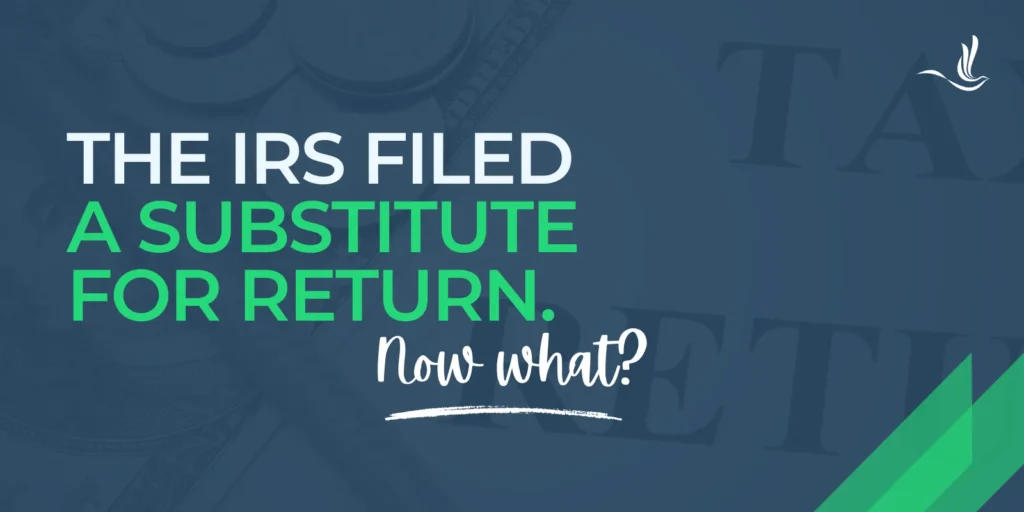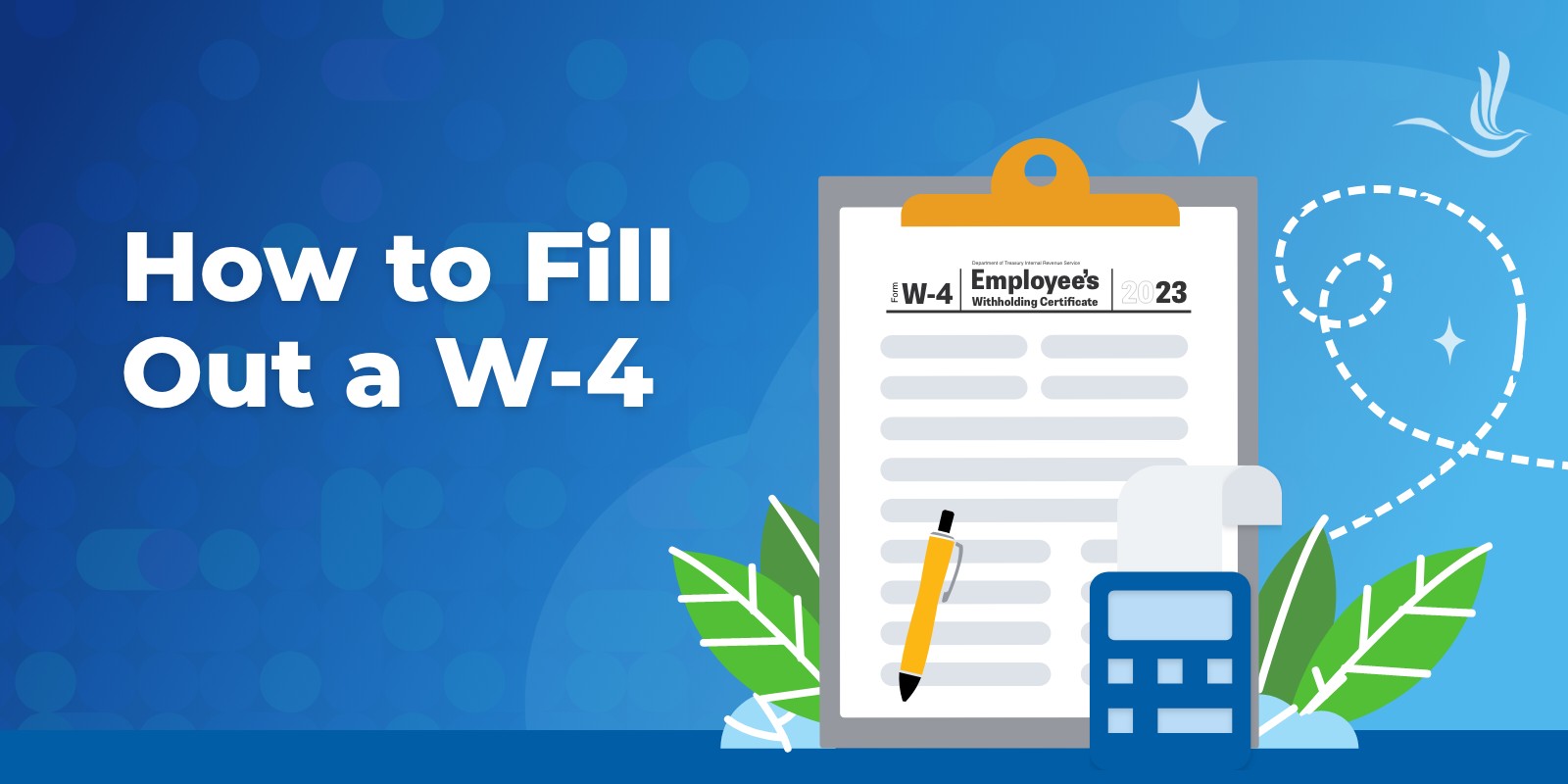One of the most significant obligations U.S. taxpayers have is to file an annual federal tax return. However, life gets busy, and sometimes individuals either forget or deliberately neglect to file. When this happens, the IRS doesn’t simply forget about it. Instead, they may take matters into their own hands by filing a “Substitute for Return” (SFR) on your behalf. Here’s an overview of SFRs, including what they are, how they work, and the consequences of the IRS filing one on your behalf.
What is a Substitute for Return (SFR)?
An SFR is essentially a tax return prepared by the IRS when a taxpayer fails to file their own. While it might seem convenient—since the IRS is doing the work for you—it rarely works in your favor. The IRS relies on third-party information (e.g., W-2s, 1099s) to calculate what they think you owe. The amount owed can often be higher than if you’d filed your return yourself.
This is because the IRS files a bare-bones return without accounting for deductions, credits, or exemptions you might have been entitled to claim. The IRS’s priority is ensuring they collect tax revenue based on your income, not optimizing your tax situation. The Substitute for Return is only intended to provide a basic calculation to initiate the process of collecting unpaid taxes, penalties, and interest.
Why Would the IRS File an SFR?
The IRS typically files a substitute for return for taxpayers when they believe tax is due, but a return hasn’t been submitted. The agency relies heavily on reporting documents, such as W-2s from employers and 1099s from financial institutions and other payers, to know when you have earned taxable income. If your earnings or payments are reported to the IRS and you don’t file a tax return, the IRS will automatically take steps to rectify the situation. This is when they will consider filing an SFR for you. However, the IRS will send multiple notices before proceeding with an SFR. Typically, they’ll start with CP59, then CP515, CP516, and finally CP518. Alternatively, they may send Notice LT16. If you ignore those notices and do not file your tax return, the IRS will ultimately take action.
How Does the IRS Prepare an SFR?
The SFR process is mostly automated. The IRS relies solely on income documents submitted to them by third parties to prepare an SFR. They have no insight into your personal circumstances beyond what is reported to them. Here’s how the process works.
- Income Information Gathering: The IRS gathers information from your W-2s, 1099s, and other income documents.
- No Deductions or Credits: When preparing an SFR, the IRS does not include deductions such as mortgage interest, student loan interest, charitable donations, or medical expenses. This is true even if these documents are also reported to the IRS. Tax credits like the Earned Income Credit (EIC) or Child Tax Credit are also excluded. If you qualify for these, not filing your own return could cause you to miss out on tax-saving opportunities. This could be a massive blow to 1099 earners who are able to deduct business expenses.
- Standard Filing Status: The IRS assumes the most straightforward filing status—usually single or married filing separately. If your correct filing status should have been “married filing jointly” or “head of household,” an SFR will not account for this, which could negatively impact your tax liability.
- Tax Calculation: Based on the gathered income information and the assumed filing status, the IRS calculates the tax liability, adds penalties, and may begin the collection process if payment is not made.
What Happens Once the IRS Files an SFR?
Once the IRS files a Substitute for Return, a series of actions follow. Here’s what you can expect.
30-Day Notice
The IRS will send you IRS Letter 2566 or IRS Letter 1862 informing you that they have filed a Substitute for Return on your behalf. This notice typically includes a summary of the income information used, the tax liability they calculated, and any penalties or interest applied. The notice will also explain your rights, including the ability to file your own tax return to replace the SFR. Filing your own return can potentially lower your tax liability by including missed deductions, credits, and a more appropriate filing status.
90-Day Notice
If the IRS doesn’t hear from you within 30 days, they will escalate the situation with a Statutory Notice of Deficiency. This formal notice is typically issued via Letter 3219 or 3219N. It informs you that they have determined a tax deficiency based on the income information available to them. The Notice of Deficiency gives you 90 days to either file your own tax return or petition the U.S. Tax Court to contest the IRS’s determination. If you fail to respond to this notice, the IRS will assess the taxes, penalties, and interest. After this, collections actions can begin, including liens or levies. They will also send you IRS Notice CP22E, which details your balance due.
Penalties and Interest
When the IRS files an SFR, they apply penalties for failure to file and failure to pay. The failure-to-file penalty is 5% of your unpaid taxes for each month (or part of a month) your return is late, up to a maximum of 25%. The failure-to-pay penalty is generally 0.5% per month, up to 25% of your unpaid taxes. On top of these penalties, the IRS adds interest on any unpaid taxes. Interest compounds daily from the original due date of the return.
Collections
Once the IRS files an SFR and determines that you owe taxes, they will begin their collection process. This could include issuing notices, placing liens on your property, garnishing your wages, or levying your bank accounts. The IRS has extensive power to collect unpaid taxes, so it’s crucial to address the situation as soon as possible to avoid these collection actions.
Limited Appeal Options
You still have options to correct the situation, but they become more limited once an SFR is in place. The best course of action is to file your own tax return as soon as possible to replace the SFR. You will need to prove your actual tax liability, and the IRS will review the return you file. If you owe less than what the IRS calculated, you may still be on the hook for penalties and interest, but the tax owed could be significantly reduced.
What Can You Do If the IRS Files an SFR?
The key to resolving an SFR situation is to take action quickly.
- File Your Own Return: The best way to fix an SFR situation is to file your own accurate tax return for the year in question. This return will override the SFR and give you credit for all deductions and credits you are eligible for. This can dramatically reduce your tax liability.
- Respond to IRS Notices: It’s important to respond to any IRS notices you receive regarding an SFR. Ignoring the issue will only lead to more severe consequences, such as wage garnishments or bank levies. Be proactive by communicating with the IRS to resolve the issue.
- Request Penalty Relief: In certain situations, you may qualify for penalty abatement or relief from penalties if you can show reasonable cause for your failure to file or pay on time. A tax professional can help you determine whether you qualify for such relief and guide you through the process.
- Consider Professional Help: If the situation feels overwhelming or you’re unsure how to proceed, consider seeking help from a tax professional. They can assist with filing the correct return, negotiating with the IRS, or setting up a payment plan if you owe more than you can pay immediately.
Tax Help with SFRs
While the IRS filing a Substitute for Return on your behalf may seem like a temporary solution, it’s not a desirable outcome. An SFR often leads to inflated tax liabilities, penalties, and interest, and it opens the door for the IRS to start collections. The best way to avoid an SFR is to file your tax return on time every year. However, if the IRS does file one for you, you can still remedy the situation by filing your own return, responding to notices, and seeking professional guidance when necessary. Optima Tax Relief is the nation’s leading tax resolution firm with over a decade of experience helping taxpayers with tough tax situations.
If You Need Tax Help, Contact Us Today for a Free Consultation
Publisher: Source link











